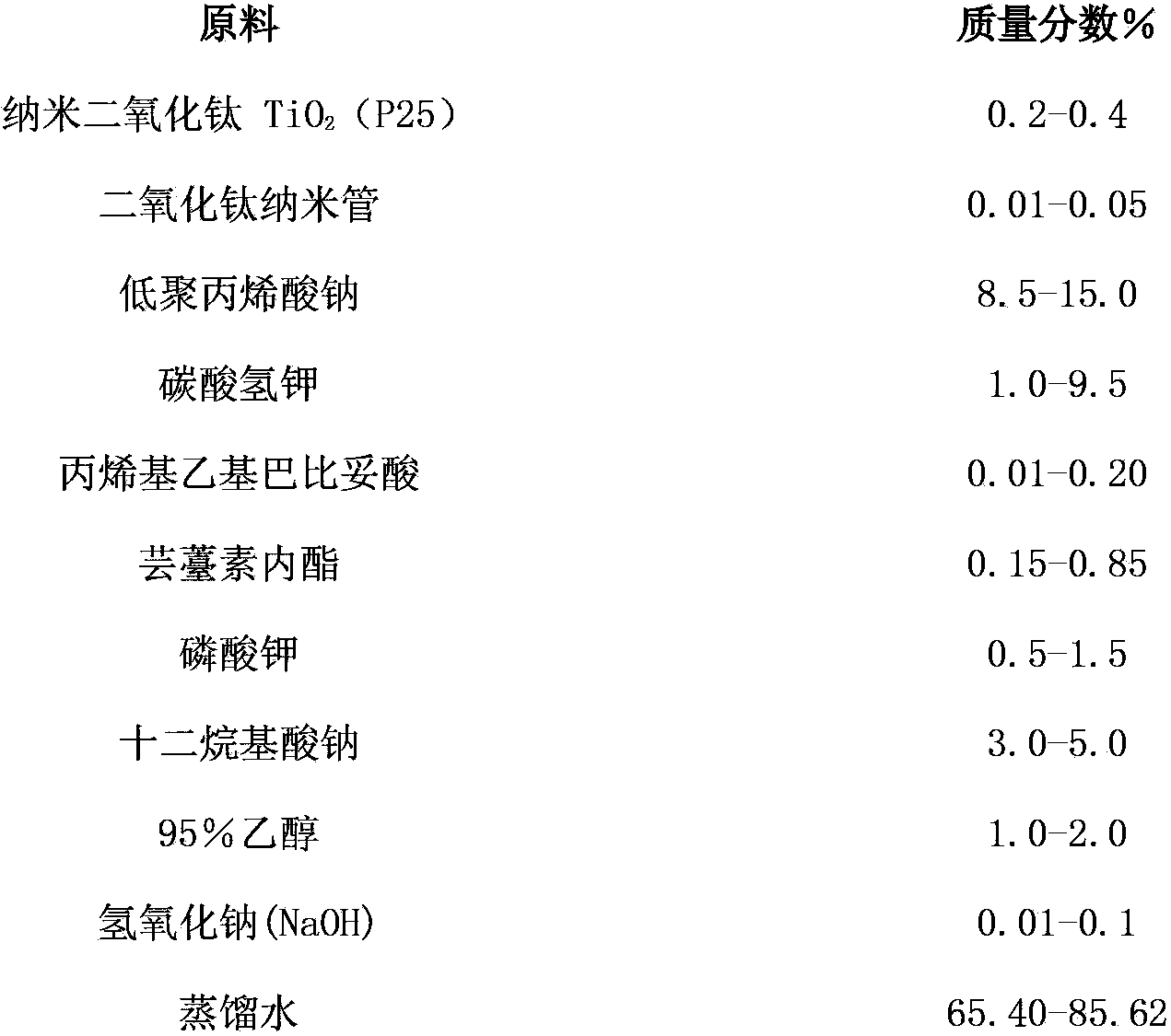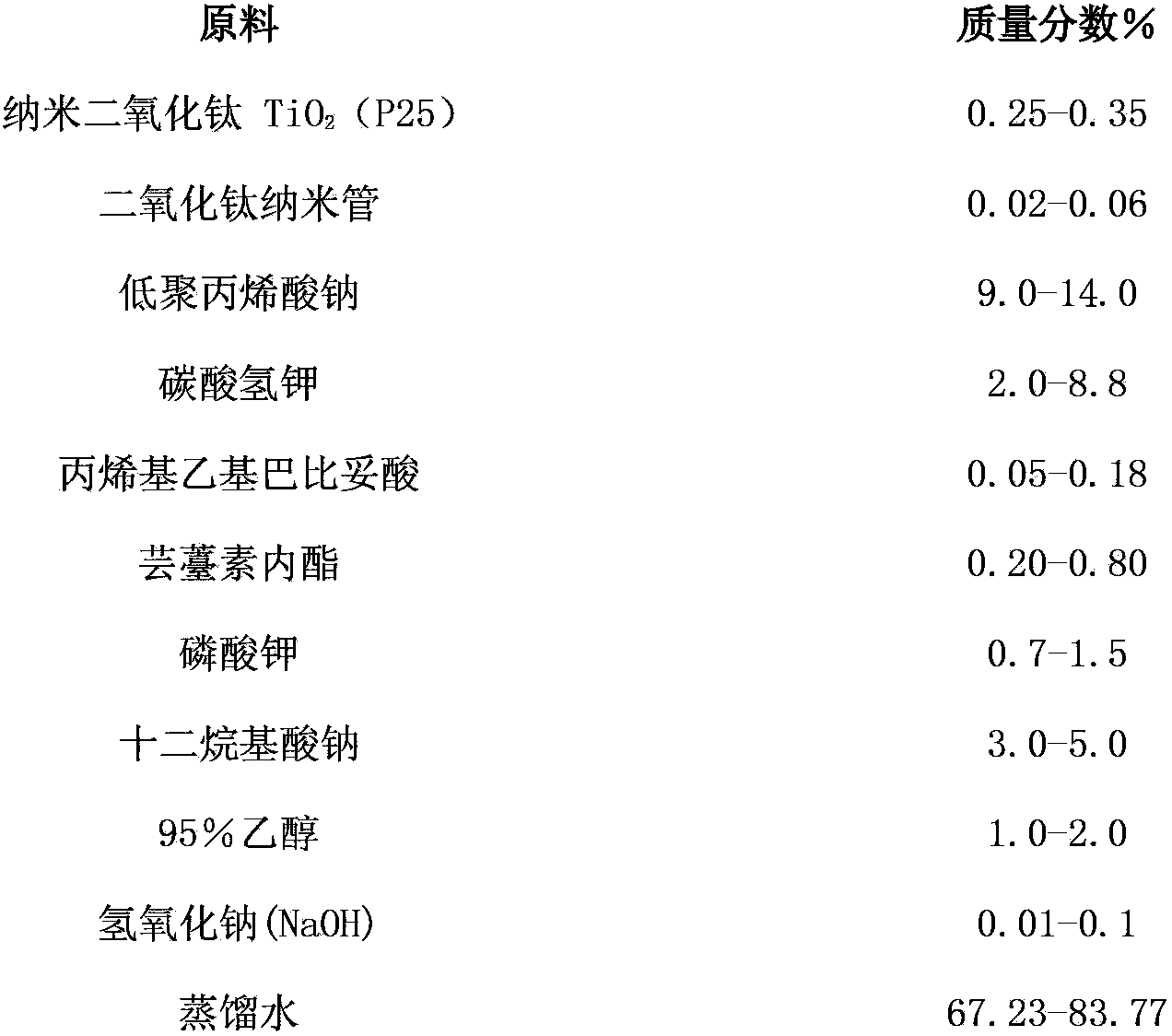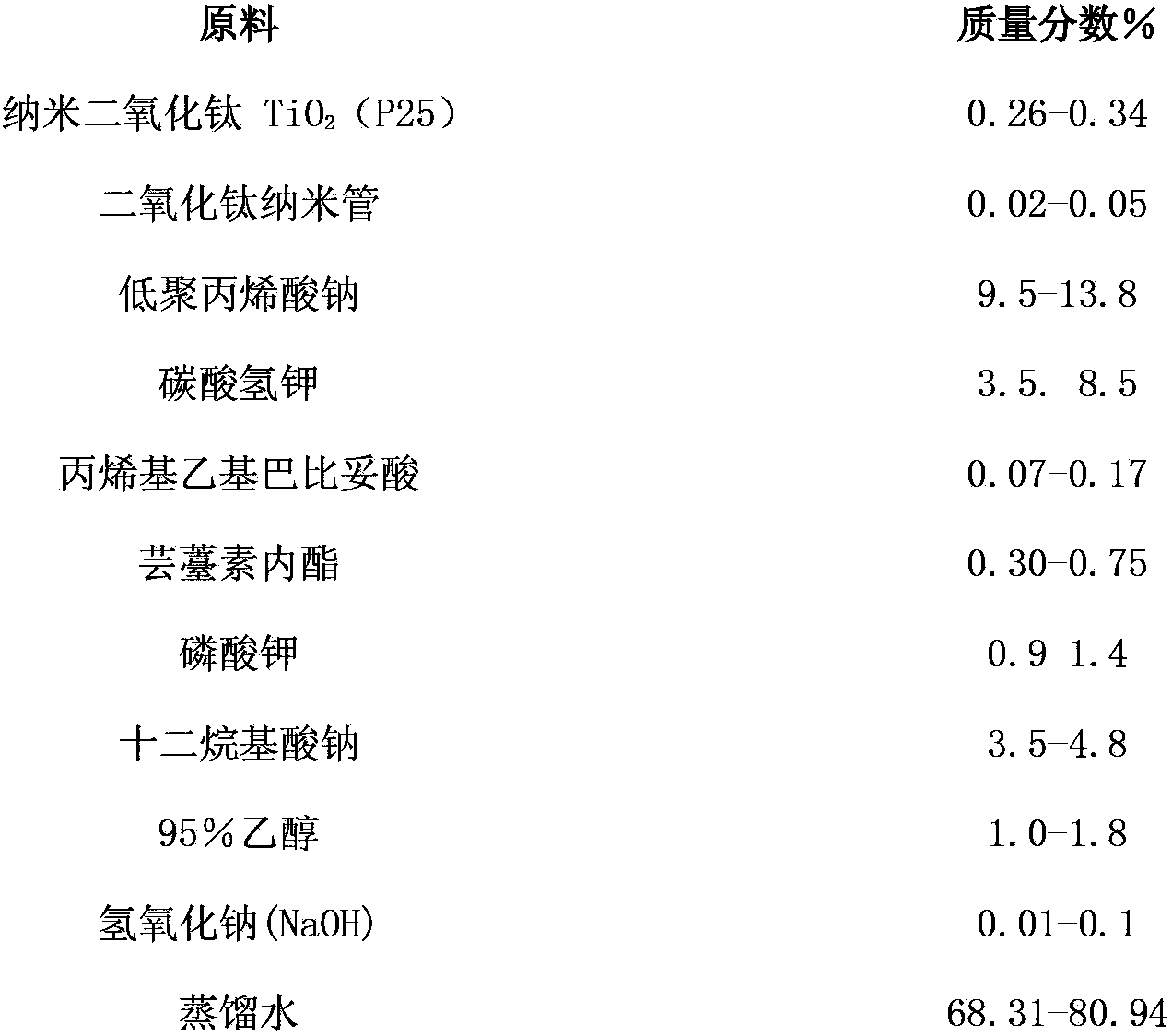Light-efficiency accelerant for non-leaf organs of plants and preparation method thereof
An accelerator, non-leaf technology, applied in the field of bioengineering, can solve the problems of few types of light effect accelerators, the effect of plant yield and economic benefits cannot be long-lasting, etc. Effect
- Summary
- Abstract
- Description
- Claims
- Application Information
AI Technical Summary
Problems solved by technology
Method used
Image
Examples
Embodiment 1
[0036]A plant non-leaf organ photosynthesis accelerator, comprising 0.4 grams of nano-titanium dioxide (P25), 0.04 grams of titanium dioxide nanotubes, 12.0 grams of oligomeric sodium acrylate, 7.5 grams of potassium bicarbonate, 0.02 grams of propenyl ethyl barbituric acid, 0.5 grams of brassinolide, 1.0 grams of potassium phosphate, 3.0 grams of sodium lauryl acid, 2.0 grams of 95% ethanol, 0.05 grams of sodium hydroxide, and the balance of 73.49 grams of distilled water; that is, it is made by the mass fraction of the following raw materials :
[0037]
[0038] Concrete preparation steps are:
[0039] A. Dissolve nano-titanium dioxide and titanium dioxide nanotubes with 95% ethanol first, add 300ml of distilled water, then ultrasonically shake for 18 or 19 or 20 or 21 or 22 minutes, add oligomeric sodium acrylate, and keep the airtight and constant temperature for 20 or 21 or 22 or 23 or 24 hours , adjust the pH value to 7.8 or 7.9 or 8 or 8.1 or 8.2 with NaOH and set t...
Embodiment 2
[0046] A plant non-leaf organ photosynthesis accelerator, comprising 0.35 grams of nano-titanium dioxide (P25), 0.06 grams of titanium dioxide nanotubes, 10.0 grams of oligomeric sodium acrylate, 8.0 grams of potassium bicarbonate, 0.05 grams of propenyl ethyl barbituric acid, 0.60 g of brassinolide, 0.90 g of potassium phosphate, 3.5 g of sodium lauryl acid, 1.5 g of 95% ethanol, 0.05 g of sodium hydroxide, and 74.99 g of distilled water as the balance. That is, the mass fraction of raw materials is:
[0047]
[0048] The preparation steps are the same as in Example 1.
[0049] Take 20ml of this preparation at the flowering stage of soybeans, add 10 liters of water (diluted 500 times) and mix evenly, and then spray evenly on the skins, stems and petioles of soybean pods at noon. Measure yield. Photosynthetic effect compared with the control results are as follows:
[0050]
Embodiment 3
[0052] A plant non-leaf organ photosynthetic accelerator, comprising 0.3 grams of nano-titanium dioxide (P25), 0.05 grams of titanium dioxide nanotubes, 12.0 grams of oligomeric sodium acrylate, 9.0 grams of potassium bicarbonate, 0.1 grams of propenyl ethyl barbituric acid, 0.5 g of brassinolide, 1.2 g of potassium phosphate, 3.5 g of sodium laurylate, 1.8 g of 95% ethanol, 0.05 g of sodium hydroxide, and 71.5 g of distilled water. That is, it is made from the following raw material mass fractions:
[0053]
[0054] The preparation steps are the same as in Example 1.
[0055] Take 20ml of this preparation at the initial flowering stage of rapeseed, add 16 liters of water (diluted 800 times) and mix evenly, and then spray evenly on the rape silique peel, stem, and branches at noon, measure the photosynthetic rate of rape silique peel at the corner stage, and Yield was measured after harvest. Photosynthetic effect compared with the control results are as follows:
[0056]...
PUM
 Login to View More
Login to View More Abstract
Description
Claims
Application Information
 Login to View More
Login to View More - R&D
- Intellectual Property
- Life Sciences
- Materials
- Tech Scout
- Unparalleled Data Quality
- Higher Quality Content
- 60% Fewer Hallucinations
Browse by: Latest US Patents, China's latest patents, Technical Efficacy Thesaurus, Application Domain, Technology Topic, Popular Technical Reports.
© 2025 PatSnap. All rights reserved.Legal|Privacy policy|Modern Slavery Act Transparency Statement|Sitemap|About US| Contact US: help@patsnap.com



